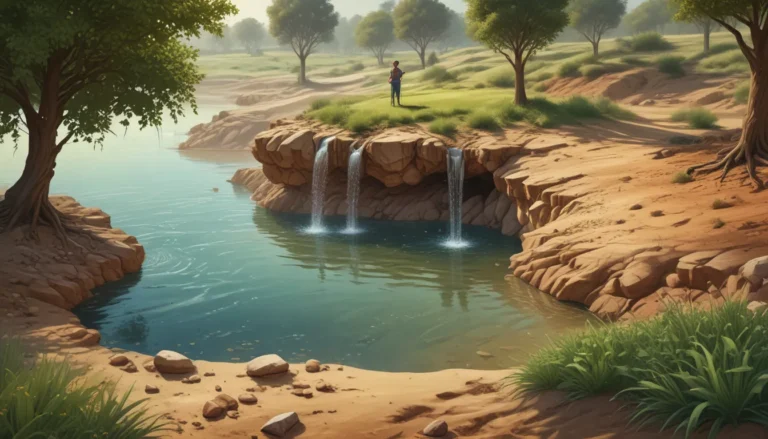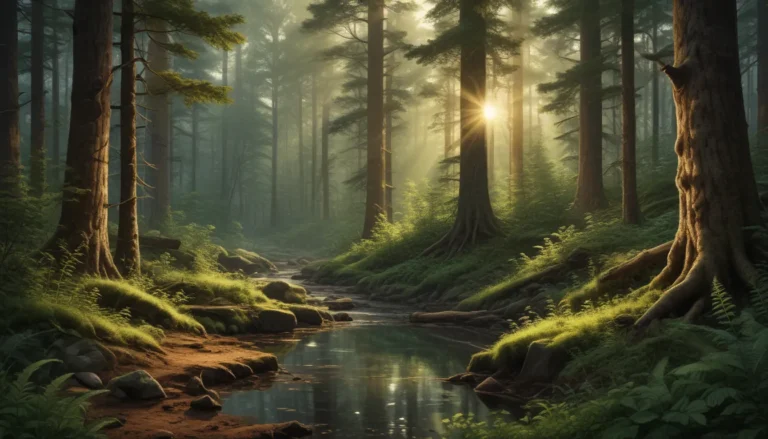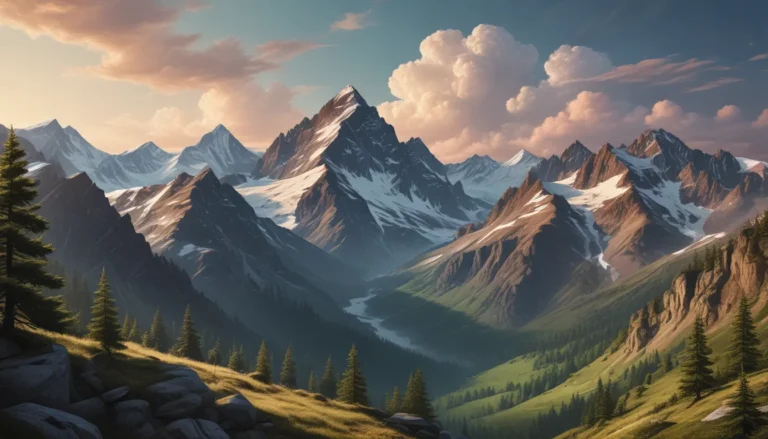A Note About Images: The images used in our articles are for illustration purposes only and may not exactly match the content. They are meant to engage readers, but the text should be relied upon for accurate information.
Geology, the study of the Earth’s crust, unveils a realm of wonders that captivate the curious minds of enthusiasts worldwide. Among these geological marvels, the horn stands out as a sharp peak or mountain ridge sculpted by the relentless action of glaciers. From the towering peaks of the Himalayas to the majestic fjords of Norway, horns adorn our planet with their striking presence.
Horns: Nature’s Masterpieces
Delve into the enchanting world of horns as we unravel some astounding facts about these geological wonders. From their formation and unique characteristics to their significance in various cultures, horns offer a captivating blend of beauty and intrigue. Join us on this journey to explore the enchanting world of horns in geology and discover the hidden treasures they hold.
The Origin of “Horn”
The term “horn” in geology traces its roots back to the Old English word “horn,” signifying a projecting peak or spur of a hill or mountain. This simple yet evocative term aptly describes the sharp and pointed features of these geological formations.
A Creation of Glaciers: The Birth of Horns
Horns emerge as distinctive landforms shaped by the erosive power of glaciers. When glaciers erode three or more cirques, they carve out a sharp, pointed peak known as a horn. This intricate process unfolds over thousands of years, sculpting these natural masterpieces with precision and grace.
The Iconic Matterhorn: A Symbol of Majesty
Among the world’s renowned horns, the Matterhorn in the Swiss Alps stands tall as a testament to nature’s artistry. Its iconic silhouette and rugged beauty epitomize the allure of these geological wonders, drawing adventurers and explorers from far and wide.
The Artistry of Formation: Frost Weathering at Work
Horns owe their distinct shapes to a process known as frost weathering, where the cyclic freezing and thawing of water in cracks and crevices fracture the rock. This relentless cycle of nature gradually sculpts the steep and jagged slopes that characterize these majestic peaks.
Home to Unique Wildlife: Nature’s Sanctuary
Beyond their geological significance, horns serve as havens for a diverse array of wildlife adapted to thrive in extreme environments. These isolated and rugged landscapes harbor unique species, adding a touch of biodiversity to these awe-inspiring natural wonders.
A Mountaineer’s Dream: Conquering the Horns
The steep and jagged slopes of horns offer a thrilling challenge to mountaineers and climbers seeking to conquer these formidable peaks. A magnet for adventure enthusiasts, horns beckon the brave to test their mettle against nature’s grandeur.
The Legacy of Glacial Era: Traces of Ancient Forces
Horns stand as lasting remnants of the glacial era, showcasing the transformative power of ancient glaciers on our landscapes. These geological marvels bear witness to the ebb and flow of time, preserving the memory of our planet’s ever-evolving geology.
Shaping Earth’s Crust: The Dance of Tectonic Forces
Horns often emerge in regions marked by active tectonic processes, illustrating the dynamic nature of Earth’s crust. The interplay of tectonic forces shapes and reshapes these iconic landmarks, leaving behind a legacy of geological intrigue.
A Testimony to Time: Geological Significance of Horns
Horns offer valuable insights into the geological history of a region, unraveling the intricate processes that have shaped landscapes over millions of years. As geological landmarks, horns unveil tales of Earth’s past, enriching our understanding of the planet’s evolving history.
Guiding the Wanderer: Symbols of Natural Beauty
Majestic and awe-inspiring, horns often serve as iconic landmarks for their surrounding regions, attracting tourists and nature enthusiasts alike. These geological wonders embody the beauty of nature, standing as testaments to the Earth’s enduring allure.
The Spirit of Nature: Symbolism and Mythology
In various cultures, horns hold symbolic significance, representing strength, endurance, and the awe-inspiring power of nature. Embedded in myth and legend, horns evoke a sense of reverence for the forces that shape our world.
Preserving Nature’s Legacy: Conservation of Horns
The preservation and conservation of horns and their surrounding ecosystems are paramount for safeguarding biodiversity and protecting our natural heritage. By cherishing these geological treasures, we ensure a sustainable future for generations to come.
Unlocking the Mysteries of Horns in Geology
The realm of horns in geology unfolds as a tapestry of wonders, each thread weaving a story of Earth’s profound history. From their formation to their enduring legacy, horns stand as beacons of geological marvels, inviting us to explore and cherish the extraordinary world beneath our feet. Embrace the awe-inspiring beauty of horns in geology and embark on a journey of discovery into the depths of Earth’s enchanting landscapes.
FAQs
Q: What is a horn in geology?
A: In geology, a horn refers to a pointed or peaked mountain or landform formed through geological processes such as glaciation, erosion, or volcanic activity.
Q: How are volcanic horns formed?
A: Volcanic horns, also known as volcanic peaks or spires, are created when a volcano erupts, and surrounding material erodes unevenly, resulting in a distinct peak or horn shape.
Q: What causes the unique shapes of glacial horns?
A: Glacial horns, like the Matterhorn in the Swiss Alps, are formed when glaciers erode mountains from multiple sides simultaneously, creating sharp, pyramidal peaks with steep, angular slopes.
Q: Are horns exclusively found on Earth?
A: No, horns are not limited to Earth. Mars features Martian horns, similar landforms believed to be shaped through volcanic activity or erosion by wind and dust storms.
Q: Do horns play a significant role in geological research?
A: Yes, horns are of great importance in geological research, offering valuable insights into the Earth’s geological history, past climatic conditions, and the forces that have shaped landscapes over millions of years.
Q: What are some famous horns around the world?
A: Several renowned horns include the Matterhorn in the Swiss Alps, Aiguille du Dru in France, Hornocal in Argentina, and Devils Tower in the United States, among others.
Delve Deeper into Geological Marvels
Embark on a journey of discovery through the fascinating realms of geology, uncovering the secrets of Earth’s natural wonders. From volcanic peaks to rugged canyons, the planet’s geological tapestry holds a wealth of captivating facts waiting to be explored. Join us in unraveling the mysteries of Earth’s crust and immerse yourself in the breathtaking beauty of geological marvels.
Explore the World of Geology
Enrich your knowledge of Earth’s geological processes with our diverse collection of facts and insights. From igneous rocks to plate tectonics, delve into the captivating realms of geology and broaden your understanding of the forces shaping our planet. Join us in celebrating the wonders of geology and embark on a journey of discovery into the heart of Earth’s mesmerizing landscapes.






